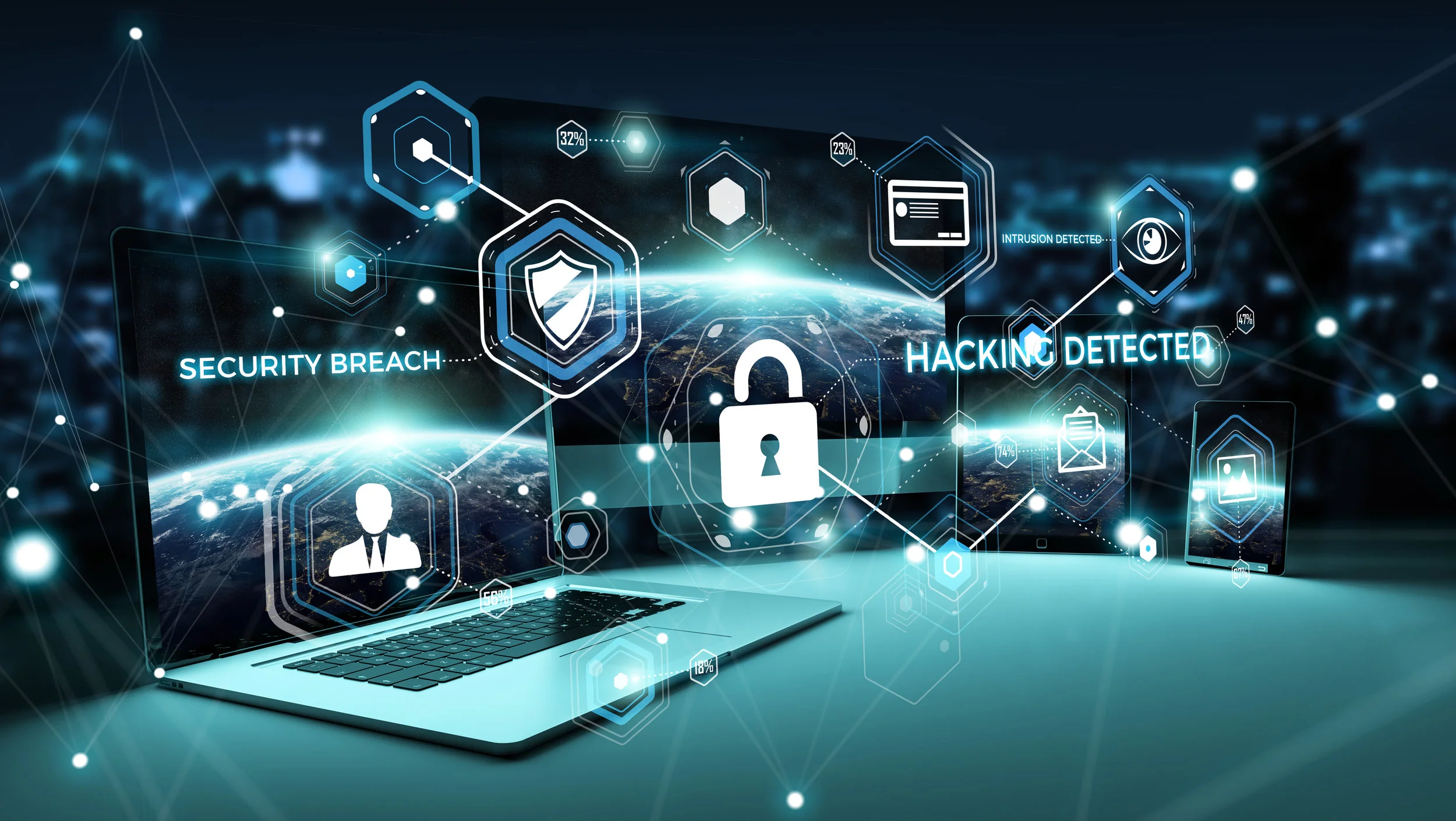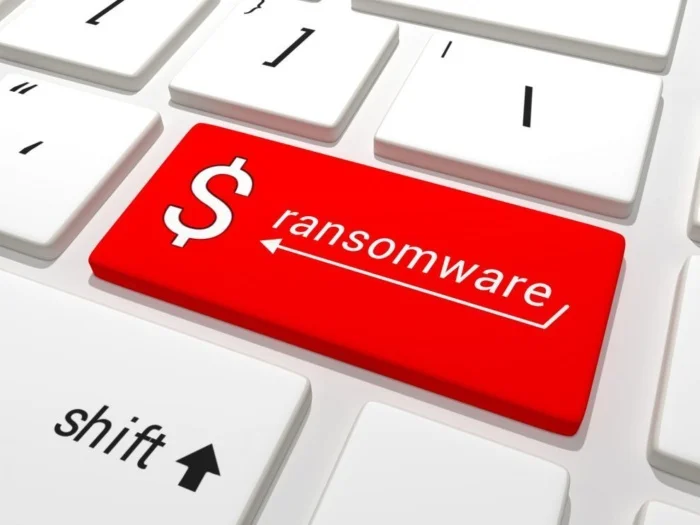SMB Cybersecurity & Ransomware
SMB Cybersecurity & Ransomware
Small Businesses today are challenged with investing in network security and keeping up with technology with limited resources and budgets. Ransomware is a type of malware that encrypts files on a targeted computer and demands payment in exchange for unlocking them. Here are the top three steps SMBs can take to protect themselves from Ransomware:
- Backup your data regularly and test restores to ensure the backups are working properly,
- Avoid using administrative privileges on their company computers to avoid becoming a ransomware victim, and
- Implement an antivirus program with an automatic update.
1. There is no such thing as 100% cybersecurity protection. It is important to have up-to-date antivirus protection and not allow admin access to the company computer.
2. It is important to ensure that all employees are educated on the dangers of Ransomware and have a plan in place for how they will respond if a computer is infected with ransomware as employees can cause more damage than any malicious software.
3. It is important to have an audit process in place for all employees to ensure they are not downloading malware or ransomware onto their computers.
4. It is important to stay vigilant on the threat of Ransomware and keep working with your IT provider prior to any attacks happening. Ransomware is still a very real threat that could affect your company and compromise data.
Cybersecurity Tips for Employees
In this eBook, we explore the need for employees to practice strict and secure cyber-security habits— not only to thwart digital attacks, but also to prevent someone from simply walking by their desk (in the office or at home) and picking up a device or document that contains sensitive information. We also present the key steps SMB business owners can take to educate their employees to help secure their company’s data and intellectual property.
When developing cybersecurity programs, many businesses focus on protecting their infrastructure perimeter and device endpoints. After all, that’s where cybercriminals usually first gain access and wreak havoc on a company’s digital access.
But it’s also important to consider what happens when a threat bypasses perimeter defenses and targets an employee—in the form of a malicious email or text, or even a voicemail that might prompt an employee to respond with confidential company information. There’s also the possibility of an offline attack from inside the office, where an employee or an office visitor might gain access to valuable data by quickly taking something carelessly left on a desk.
According to a recent PricewaterhouseCoopers survey, 86% of business executives expressed concern about cyber threats, including a lack of data security. In addition, 100% of IT professionals recently surveyed at an SMB said they could improve their cybersecurity systems. These numbers indicate that it’s clear there’s a pressing need for better cybersecurity. The issue is not going away anytime soon. If anything, it’s only getting worse.
Stronger cybersecurity has become a global priority over the last few years as hackers penetrate the IT infrastructure of government and enterprises with increasing frequency and sophistication. According to a recent government report, How to Protect Your Networks from Ransomware, 4,000 ransomware attacks occurred per day in 2016. Furthermore, the annual cost of global cybercrime damages are estimated to cost $6 trillion by 2021, according to a 2017 Cybercrime Report by Cybersecurity Ventures. Coupled with the Internet of Things (IoT) and the explosive growth of mobile devices, the threat landscape and potential for data leaks is even more significant.
In this eBook, we explore the need for employees to practice strict and secure cybersecurity habits— not only to thwart digital attacks, but also to prevent someone from simply walking by their desk (in the office or at home) and picking up a device or document that contains sensitive information. We also present the key steps SMB business owners can take to educate their employees to help secure their company’s data and intellectual property.
We can’t stress enough the importance of security awareness training for internal employees. Educating them on what it takes to protect proprietary documents and data is critical. Any leaks— unintentional and intentional—could hurt the business in the form of information that assists a competitor, violates regulations, or harms the corporate image. Leaks can also hurt employees from the standpoint of personal information that might be exposed. Lastly, customers and business partners could be at risk, compromising the industry reputation of any business that does not properly protect confidential information. It only takes one incident to completely destroy any goodwill you established and built with your customer base.
U.S. Small Business Administration recommends the following best practices, For education and cyber-prevention
Establish security practices and policies to protect sensitive information
Educate employees about cyberthreats and hold them accountable
Require employees to use strong passwords and to change them often
Employ best practices on payment cards
Make backup copies of important business data and information
Create a mobile device action plan
Protect all pages on your public-facing websites, not just the checkout and sign-up pages
The survey also found:
65 percent of business owners admit they have been victim of a cyberattack; computer virus attacks are the top type of attack reported at 33 percent, phishing is number two at 29 percent.
86 percent of business owners believe that digital risk will continue to grow.
30 percent of companies with 11-50 employees do not provide any type of formal training on cybersecurity.
Despite the simplicity of regularly updating software, seven percent of companies still fail to take that step.
Reputational risk is among the top reasons (45 percent) why business owners would consider investing in or purchasing a cybersecurity policy.
35 percent of business owners who have never experienced a cyberattack are unaware of the financial cost to recover, highlighting a dangerous gap in knowledge from the implications.
Website Browsing Best Practices for Employees
As for Web-based exploits, Internet websites are now the most commonly-used angles of attack, most often targeting software vulnerabilities or using exploits on the receiving client. This makes keeping up-to-date browsers paramount for all employees.
Website Browsing Best Practices for Employees
• Be conservative with online downloads.
• Beware antivirus scams.
• Interact only with well-known, reputable websites.
• Confirm each site is the genuine site and not a fraudulent site.
• Determine if the site utilizes SSL (Secure Sockets Layer}
SSL is a security technology for establishing encrypted links between Web servers and browsers.
• Don’t click links in emails—go to sites directly.
• Use social media best practices.
Social Engineering Inboxes and VoiceMail
Email Threats
Social engineering is non-technical, malicious activity that exploits human interactions to obtain information about internal processes, configuration and technical security policies in order to gain access to secure devices and networks. Such attacks are typically carried out when cybercriminals pose as credible, trusted authorities to convince their targets to grant access to sensitive data and high-security locations or networks.
An example of social engineering is a phone call or email where an employee receives a message that their computer is sending bad traffic to the Internet. To fix this issue, end users are asked to call or email a tech support hotline and prompted to give information that could very likely give the cybercriminal access to the company’s network.
Phishing Email Compromises
One of the most common forms of social engineering is email phishing—an attempt to acquire sensitive information such as usernames, passwords and credit card data by masquerading as a trustworthy entity. Phishing is likely the #1 primary email threat employees need to focus on.
Such emails often spoof the company CEO, a customer or a business partner and do so in a sophisticated, subtle way so that the victim thinks they are responding to a legitimate request. The FBI says CEO (or C-level) fraud has increased 270 percent in the past two years with over 12,000 reported incidents totalling over $2 billion dollars in corporate losses.
Among the reasons these scams succeed are the appearance of authority—staffers are used to carrying out CEO instructions quickly. That’s why phishing can be so easy to fall victim to.
RSA Conference, “How a Security CEO Fell Prey to Scammers (Almost),” 3/3/2016: http://www.rsaconference.com/blogs/security-ceo-scammers#sthash.egMiB2xW.dpuf











